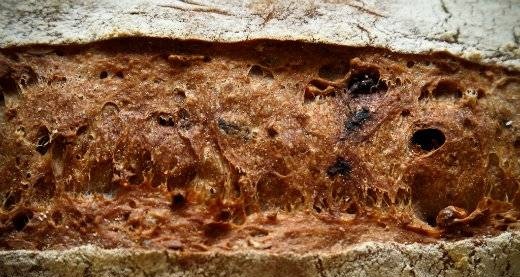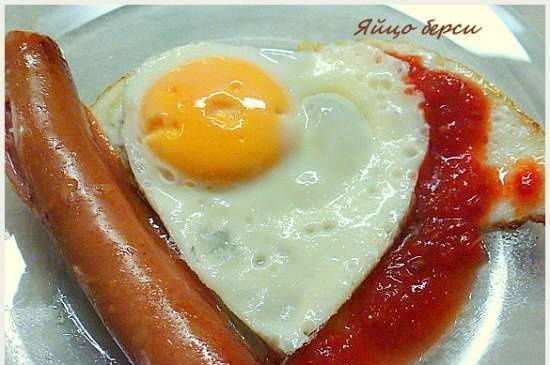This is what I found in tyrnet, it can be useful for beginners.
Slowcooker is an electrical appliance consisting of 1) a glazed ceramic insert-pan, 2) a heating element covering the entire area and 3) a lid. Slowcooker cooks food slowly at low temperatures between (LOW) 170F / 77C and (HIGH) 280F / 138C. Some online sources refer to an upper temperature limit of 190-200F / 88-93C, so it is best to check the instructions that came with your particular slowcooker. Some slowcookers have only two temperature settings LOW and HIGH, others also have MEDIUM and WARMING.
The combination of heating over the entire area of the pan, long-term cooking and circulation of hot steam under the lid allows you to destroy all potentially harmful bacteria to humans. However, in LOW mode it will take the slowcooker several hours to reach the temperature at which the bacteria die. Therefore, start cooking in a slowcooker with a clean, especially clean ceramic insert pot. Products such as meat, fish, poultry should be defrosted and stored in the refrigerator before being placed in the slowcooker. Often, when adapting traditional recipes that pre-cook at high temperatures prior to normal braising, do the same before cooking in a slowcooker. But, this is not the rule. For example, low temperatures allow low-grade or lean meats to be cooked soft and without loss of fluid weight. In these cases, it is best to take advantage of these slowcooker benefits and avoid pre-frying. A very good rule of thumb is to cook the first hour of meat-based dishes in HIGH mode and then switch to LOW. (1 hour of HIGH cooking equals 2 hours of LOW cooking.)
Stokoker is filled not less than half and not more than two-thirds of its volume. If the filling is less than half, then the food will cook too quickly, if more than two thirds, then the dish will not heat up evenly. To get the most of the benefits of training in slowcooker, you should refrain from curiosity about what's going on under the hood. Most often, the lid can and should not be touched at all until the very messenger of cooking. Look under the lid only when you need to mix or check readiness. In LOW mode, each peek under the lid lengthens the cooking time by 20-30 minutes.
Once the dish is ready, you can turn off the slowcooker and leave the food in it until serving. The pan liner keeps heat very well. But, in cases where the cooked is supposed to be stored in the refrigerator, it is safer to cool it faster by transferring it to a container. Slowcooker is not recommended to be used to reheat something that has already been cooked, because the reheating will be too slow.
Vegetables cook more slowly than meat or poultry, so start cooking earlier and place them in the bottom of the pot.
In most cases, meat requires 8 hours of LOW cooking. Slowcooker is ideal for cooking leaner meats and poultry. Some sources recommend frying the minced meat before adding it to the slowcooker. I have never done this and I do not understand why this is necessary.
The seafood is added in the last hour of cooking, otherwise it will overcook.
Delicate ingredients such as tomatoes, zucchini, mushrooms are added in the last 45 minutes of cooking.
If the recipe involves adding cream or milk, they are added in the last 30 minutes, unless it is a specific recipe.
Liquids do not evaporate in a slowcooker, so if a recipe needs to be adapted to evaporate, the amount of liquids is reduced by one-third or one-half, unless soups are being prepared or when swelling grains or legumes are present as ingredients.
Cayenne pepper and sauces containing it become hotter after prolonged cooking, so I use less for slowcooker and add them towards the end.
Spices are added during the last hour of cooking. Almost all spices lose their aroma during long cooking times.
A few questions and answers from the discussion in my journal and added along the way:
Question
For example, I want to make buckwheat or barley with dried mushrooms in a slowcooker. Do I need to soak all of this first, or just fill it up, add water and that's it? Or make a broth from mushrooms first? And is it better at high temperatures and faster, or vice versa? And if you add meat, you also need to fry it first, or can you do that?
Answer
I would reason like this: There are famous recipes for onion confit and chicken on an onion pillow in a slowcooker. This means that the onion can be very tasty caramelized in the slowcooker itself without pre-frying. But this will not happen if you add a lot of liquid to the onion at once. You can caramelize a lot of onions in a slowcooker, store them in the refrigerator, and then just add them to your meals as needed. Or fry a little separately for this particular dish, which is an additional operation. With the rest, it is easier to put dry mushrooms on caramelized onions, on top of cereals and pour water in the same way as for ordinary cooking, because both mushrooms and cereals will need a lot of liquid and time to absorb, swell, and cook. The slowcooker will really come in handy for them. With fresh mushrooms, this issue would not have worked. Fresh mushrooms would need to be added towards the end of cooking. I would not add meat here in any form, and if I did, I would put something like raw lean veal cut into medium-sized pieces on dry mushrooms. We add spices in the last hour of cooking.
Question:
"Did I understand correctly that oiling this saucepan is from the evil one?"
Answer:
Right.
Question
"Is the yogurt maker, in fact, a narrow-use slowcooker?"
Answer
No, in yogurt makers the most favorable temperature for fermentation is maintained - 38-40C. This is too low for heating milk. The principle of a yoghurt maker is that it keeps this temperature ideal for all 6-8 hours of fermentation, which is very important for the preparation of exactly yogurt - so that you get a continuous curd of creamy consistency.
Question
"Are there any fundamental differences between the models offered on the market, or are they about the same?"
Answer
1. There are slowcookers with removable and stationary nesting pan. With a removable preference, they are easier to keep clean.
2. Glazed ceramic insert pots with thick walls are preferred. They keep heat more stable.
3. Before buying, it is worth asking what temperatures are behind each of the cooking modes. It happens that the low temperatures are too high and the difference between low and high is very small.Some slowcookers have WARMING reshims that are lower than LOW and there is an intermediate MEDIUM between the lowest and highest temperatures. Their presence is not essential, but if there is an opportunity to buy with them for the same price, then why not.
4. Some slow-cookers now have a built-in timer on which you can set how long to cook in which mode and when to turn it off. The timer is more convenient if there is no time to switch the temperature one hour after the start of cooking from HIGH to LOW. But, I do not consider the presence of a timer for a slowcooker essential. The price of the unit increases, but in fact it is much easier to organize yourself around what is intended to be cooked in it.
5. It is preferable to choose a slowcooker, in which the heating element completely covers the ceramic pan.
6. They differ in capacity and here one should proceed from the volume of what will be prepared.
Question
"How do you get a clear broth in slowcooker?"
Answer
The same as when cooking broth in a regular saucepan in a way that does not form foam. If you do not go into the biochemical details of the process, then meat, bones, or meat with bones, you just need to fry or bake (including under broil or on the grill) before starting to prepare the broth. In this case, excess fats are removed and the "juices" that are responsible for the formation of foam are seized. The broth turns out to be of a beautiful rich color and rich taste. The answer to the question essentially follows from the rule about the use of fatty foods in slowcooker cooking. Lean meat is preferred. With jellied meat, the situation is a little different - the foam settles on the walls and bottom of the pan, the rest of the broth remains transparent, it is drained immediately after cooking, the meat is disassembled and all this is immediately sent to containers for cooling. When pouring from a slowcooker, the broth often doesn't even need to be strained.
Many treat slowcookers with disdain. It seems to me that this is due to the fact that almost all the recipes in cookbooks for this type of cooking look like this: fry this, boil that, roll that, and now put it all in a slowcooker and simmer for 5-6 hours. Wonderful! "Porridge from an ax." What's the point of getting involved with a slowcooker then?
The very first question you should ask yourself before you start cooking in slowcooker is whether it really makes sense to cook THIS in it. Will the dish benefit from this? Will I win anything if I have to dance too much around him with a tambourine? I have several proven dishes that I cook in a slowcooker because they turn out to be incredibly tasty in it, like no other cooking option. And at the same time, they do not require excessive body movements from me. I found them through experiments based on logic and experience.





